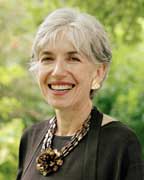
I have spent my entire professional life writing. Beginning fresh out of college as a technical writer for IBM, I moved quickly into journalism in January of 1970, just in time for the first Earth Day. My two all-time favorite full-time jobs were as science writer for the Cornell University News Bureau, where my beat included everything from astronomy to veterinary medicine, and staff reporter in the Science News department of The New York Times, covering psychology and psychiatry. My most unforgettable assignment at the Times required me to live 25 days as a research subject in a “chronophysiology” laboratory, where the boarded-up windows and specially trained technicians kept me from knowing whether it was day outside or night.
For twenty years I wrote freelance for numerous magazines, most notably Harvard Magazine, Omni, Science Digest, and Discover, as well as Audubon, Life, and The New Yorker. I saw my first total solar eclipse in 1991, as a columnist with Travel Holiday, and attended Space Camp for an article in a retirement magazine called New Choices. I was born in 1947 in the Bronx, right near the Bronx Zoo and the New York Botanical Garden, so that I could walk to either by myself from an early age. My best academic credential is undoubtedly my diploma from the Bronx High School of Science (class of 1964). My home life, too, provided excellent career preparation, since my mother had trained as a chemist, and no one in my family thought it odd or unusual for a girl to be interested in science. Both my parents loved to read, convincing me by their behavior that the best way to hold someone’s attention was with a book.
The publication of Longitude in 1995 – and its unexpected success – transformed me into a full-time author of books. I greatly enjoy the more in-depth research required for book-length projects. Someone once said to me, “I would hate your job. It’s like writing one college term paper after another.” That’s exactly what it’s like, and exactly what I love best about it. People may have the impression that book tours and public appearances are the most exciting times in an author’s life. I certainly enjoy those events, and am flattered both by my publishers’ willingness to send me on tour and readers’ eagerness to come hear me. But writing is really about sitting alone in a room, and the highlights occur in that room, with no one else as witness, in the small moments of the day when the work goes well. I experienced some of the most memorable such moments during the years spent on Galileo’s Daughter, especially in winter, when the early morning hours (my best work time) were dark, and I could enter my office half-believing it was Suor Maria Celeste’s Convent of San Matteo in Arcetri.
I am extremely gratified by the warm reception my books have received—not just in terms of good reviews or ratings on bestseller lists, but also actual events that followed their publication. Longitude helped place a memorial to John Harrison in Westminster Abbey, unveiled by Prince Philip on March 24, 2006 (Harrison’s 313th birthday, and also the 230th anniversary of his death). Astronomers who read Galileo’s Daughter named a crater on Venus for Suor Maria Celeste, and also a feature on the asteroid Eros for her mother, Marina Gamba. Thanks to The Planets, an asteroid discovered in 1994 by David Levy and Carolyn Shoemaker has been officially registered as (30935) Davasobel. Right now I am writing a play about Copernicus and the events that made him buck common sense and received wisdom to defend the Earth’s motion around the Sun. In one sense, this is a complete departure for me, as I’ve never written a play before. But I also see the play attempt as a natural next step. My college degree is in theater history, since bolstered by lots of life experience as a theater-goer, and of course the theme of the piece is a familiar favorite of mine: the great transformation of humankind’s worldview through science.
